

The human face contains at least the following types of muscles: Uppers and downers, which move the face upwards towards the brow and conversely towards the chin; those that contract horizontally towards the ears and conversely towards the center line of the face; oblique muscles that contract angularly from the lips to the cheeks; orbitals that circle around the mouth and eyes; and sheet muscles that cover the neck. Among these, the muscles of the mouth carry out the most complex interactions. The primary muscle is a sphincter muscle with no bony attachment.
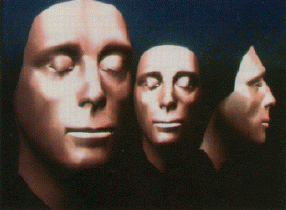 Neutral face with muscles relaxed
Neutral face with muscles relaxed
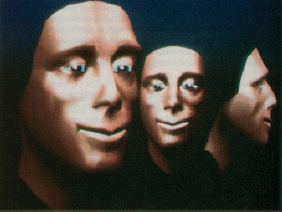 Happiness: the corners of the lips are drawn back and raised
obliquely by the zygomatic major muscle
Happiness: the corners of the lips are drawn back and raised
obliquely by the zygomatic major muscle
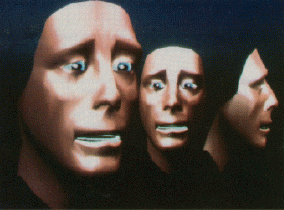 Fear: the inner brows are raised by the inner frontalis
muscle, the eyes are wide with pupils dilated. The jaw is rotated
and the lips drawn back.
Fear: the inner brows are raised by the inner frontalis
muscle, the eyes are wide with pupils dilated. The jaw is rotated
and the lips drawn back.
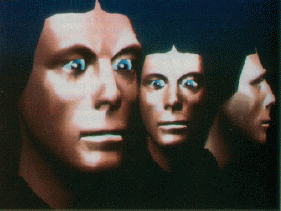 Anger: the brows are lowered and the inner part drawn
together. The jaw is not rotated and the lips are tight.
Anger: the brows are lowered and the inner part drawn
together. The jaw is not rotated and the lips are tight.
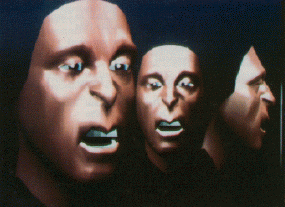 Disgust: the alaeque nasi muscle raises the upper lip
pulling the skin around the nose and causing the nostrils to dilate.
Disgust: the alaeque nasi muscle raises the upper lip
pulling the skin around the nose and causing the nostrils to dilate.
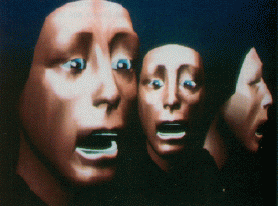 Surprise: the brows are curved and high, the eyelids wide
and the pupils dilated.
Surprise: the brows are curved and high, the eyelids wide
and the pupils dilated.